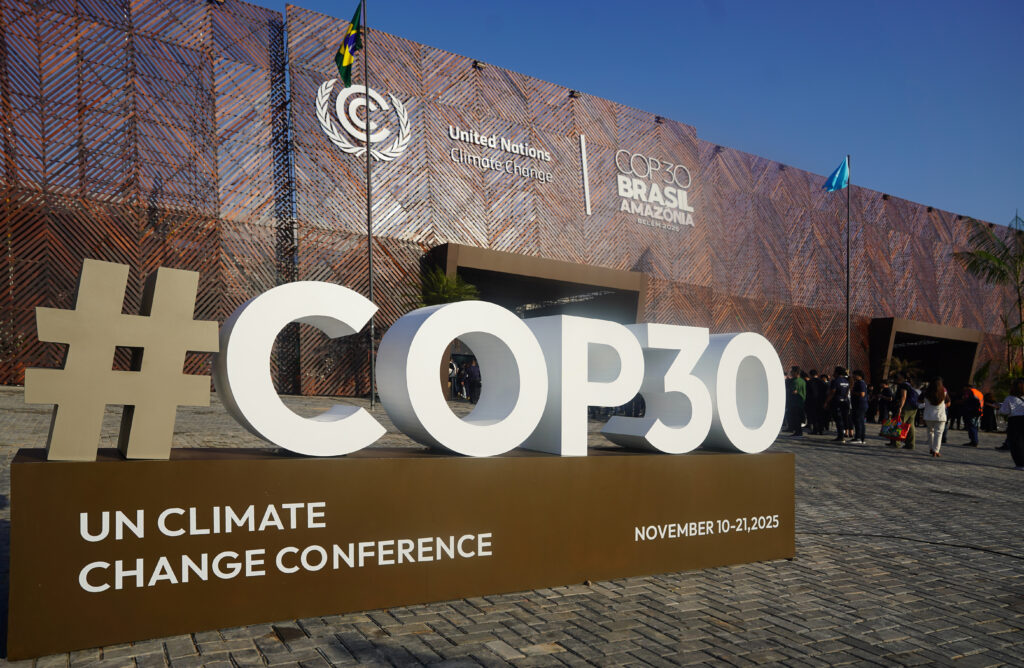As countries convene for the thirtieth UN Climate Change Conference (COP30) in Belém, Brazil, the world still faces a severe shortfall in climate finance, despite past pledges by developed countries to scale up investments. Without adequate funding for clean energy and nature-based projects in emerging markets and developing economies (EMDEs), the climate goals set by the Paris agreement will not be met, according to the United Nations.
Complicating any plan to meet financing goals, there is disagreement over how much funding is needed, what financial tools are most effective, and what the impact would be of such investment on the world economy. A report just published by the COP 30 Circle of Finance Ministers, however, provides authoritative answers to resolve many of these questions.
The Brazilian Ministry of Finance prepared the report with input from finance ministries in dozens of countries, international financial institutions, banks, industry, think tanks, environmental organizations, and many other groups. This comprehensive and rigorous review provides the most complete and reliable assessment to date of the issues facing climate finance.
Key takeaways from the report are below:
The vast majority of global financial flows goes to developed countries.
“Global climate finance flows for all countries hit an all-time high of USD 1 trillion in 2023, more than doubling in three years, but only around 10% goes to Emerging Markets and Developing Countries (EMDCs), while less than 5% goes to adaptation. The lower bound of global estimated climate finance needs – USD 6 trillion – is still 3 times more than current flows.” (Page 9 of the report)
The developed world must massively scale up financial flows to EMDEs.
“According to the third report of the Independent High-Level Expert Group on Climate Finance, EMDEs will need to invest at least USD 2.4 trillion per year by 2030 and USD 3.3 trillion per year by 2035 to meet their needs for the clean energy transition, adaptation and resilience, response to loss and damage, natural capital, and just transition. This would amount to a five-fold increase by 2030 and a six-fold increase by 2035. These estimates reflect total investment needs from all sources, both public and private, and include domestic and international finance.” (Page 9)
Investments in nature-based solutions (NbS) remain far below what is needed:
“The UNEP State of Finance for Nature (2023) estimates that annual financing for NbS must more than double, from about USD 200 billion today to over USD 400 billion by 20305, to align with global climate, biodiversity and land restoration goals.” (Page 10)
Investments in adaptation and resilience also need to be scaled up significantly.
“Well-designed adaptation investments deliver a “triple dividend”: they avoid future losses, generate positive economic returns, and create broader social benefits. Yet the adaptation finance gap remains stark. Global adaptation needs are estimated at USD 215–387 billion annually by 2030, while international public flows reached only USD 28 billion in 2022.” (Page 10)
Clean technologies are cheaper than fossil fuels
“According to IEA and IRENA analyses, clean technologies are now cheaper than fossil fuels in most regions—91% of new renewable projects in 2024 outcompeted new fossil fuel alternatives, with onshore wind and solar PV leading the way. That year alone, renewable generation displaced coal and gas that would otherwise have been burned to meet the same electricity demand, saving power systems around USD 467 billion in fuel purchases and confirming renewables as the lowest-cost source of new power, with battery prices down nearly 90%.” (Page 10)
Investment in the energy transition will power the world economy
“While outcomes will vary by country and sector, especially in the short term, many studies suggest that, over the long-term, clean investment tends to outperform business-as-usual. Boosting green investment rates by 1–2% of GDP in developed economies, and 3–5% in EMDCs can spur global growth, strengthen energy security dependence, and unlock millions of decent jobs. Accelerated climate action is the foundation for a new era of sustainable, inclusive growth. Countries that lead will thrive, shaping the industries and jobs of the future; those that delay will bear the greatest costs. The imperative is clear: act now, act together, act at scale.” (Page 11)
Failure to act will have a severe impact on the world economy
“The Network for Greening the Financial System long-term scenarios suggest that, under current climate policies, global GDP could be up to 15% lower by 2050 compared to a world without climate change, undermining the achievement of development objectives and poverty reduction. Under a scenario where global temperatures are 3°C above pre-industrial levels, which many experts see as increasingly plausible by the end of the century, projected losses could reach 30% of GDP by 2100… The macroeconomic fallout would dwarf recent crises: the only two modern episodes of global GDP contraction, in 2009 and 2020, saw one-year drops of 1.3% and 2.8% respectively.”(Page 11)
Severe impacts are happening now
“According to Munich Re (2025), climate-related disasters caused economic losses of USD 320 billion globally in 2024 – part of a continuing upward trend – of which around USD 140 billion were insured. Price stability is also already under threat: climate and nature impacts are driving inflation (Page 12)…These (climate) shocks would erode financial stability, strain public and private balance sheets, and suppress long-term investment, creating a chronic drag on growth and sustainable development. The European Central Bank found ~€70 billion in losses for just 41 banks under short-term disorderly transition and acute physical-risk scenarios— figures that may be underestimated given methodological limitations —while the Bank of England’s CBES projects late action could add ~£110 billion in credit losses and cut bank and insurer profits by 10–15% annually.” (Page 13)
Among the many financial instruments highlighted in the report, guarantees appear repeatedly. In part two of this article series, we take a closer look at why the Circle of Finance Ministers’ report identifies guarantees as one of the most powerful tools to unlock and massively scale up climate investment in EMDEs.
Ken Berlin is a nonresident senior fellow at the Global Energy Center.
George Frampton is a distinguished senior fellow at the Global Energy Center.
about the authors
stay connected
Sign up for PowerPlay, the Atlantic Council’s bimonthly newsletter keeping you up to date on all facets of the energy transition
related content
our work

The Global Energy Center develops and promotes pragmatic and nonpartisan policy solutions designed to advance global energy security, enhance economic opportunity, and accelerate pathways to net-zero emissions.
Image: Belém, Brazil ? The photos show the venue for COP30, held in the Amazonian city of Belém on November 11, 2025. The United Nations Climate Change Conference (COP30) opened today with a strong call from host countries and the UN to accelerate emissions reductions, increase climate finance, and protect tropical forests from the advance of extreme weather events.






